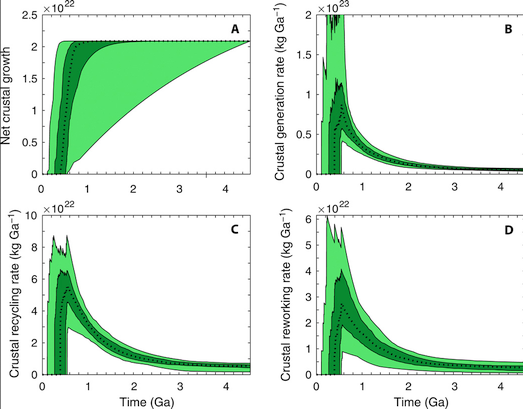Tau.Neutrino said:
Earth’s Tectonic Plates Could Be 1 Billion Years Older Than We Thought
Scientists are constantly learning more about the tectonic plates shifting across our planet’s surface. According to new research, it turns out those plates have been around on Earth for longer than we originally thought – about a billion years longer, in fact.
more…
I’ve had by doubts about the younger date ever since it was announced. The older the Earth, the more the heat flux from the interior so the more thermal convection, and the thinner the crust so the greater the mobility. The late heavy bombardment of 3.8 to 4.1 billion years ago should have fractured the crust enough for continental drift to occur, and no later event would have had the power to do so.
> The new study is based on new geochemical models of the early Earth that use the element argon (Ar) as a measure. As argon is too heavy to leave our atmosphere, we can use it as a way of peering back in time through the planet’s history. Argon gas is released as part of continental growth caused by subduction (one plate pushing down on another), a key indicator of tectonic plate activity. As argon accumulates, it can be tracked back to the radioactive decay of potassium in the planet’s crust and mantle, and then to tectonic movement.
There have been studies of isotopes of Argon, Xenon and Krypton in the atmosphere before, used as a way of studying the evolution of the atmosphere and the transition from primary to secondary atmosphere. There was a small discrepancy in isotope ratios that last time I looked (20 or more years ago) remained unexplained, but I can’t remember in which of the three noble gases the discrepancy occurred.
https://advances.sciencemag.org/content/6/21/eaaz6234
> 40Ar/36Ar of the Archean atmosphere derived from the measurements of Archean hydrothermal quartz.
> A number of Earth scientists have tried to constrain crust-mantle evolution e.g., (4–8). Whereas the existing models of continental growth exhibit great diversity, it has recently been shown that such diversity is mostly superficial (Korenaga 9).
Reference 9 looks well worth looking up.
> a sudden degassing event, which plays an important role in the early phase of argon degassing, represents the collective effect of giant impacts, and its timing corresponds to the Moon-forming giant impact.
Yes.
The following graph looks weird. Why would crustal recycling/reworking/generation be zero now, and peak 600 million years ago?

The following equations are easy enough to understand.


